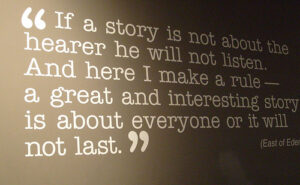 Duncan Watts has a great blog post on HBR that talks about the Occupy Wall Street movement. Specifically, he has noticed how perplexed many of us are by the fact that the movement itself has no single, identifiable leader. How can it continue without someone to set a direction and lead the people there?
Duncan Watts has a great blog post on HBR that talks about the Occupy Wall Street movement. Specifically, he has noticed how perplexed many of us are by the fact that the movement itself has no single, identifiable leader. How can it continue without someone to set a direction and lead the people there?
Interestingly, Watts points out that we don’t make the same demand of a forest fire. It’s the systemic conditions that caused and sustain the forest fire, so that single spark that set it off really isn’t the issue. But it’s hard for us to see a human endeavor that way. Our culture has been so saturated with the myth of the heroic individual leader, that we demand to see what we are expecting, even if it doesn’t make sense. In fact, if we don’t see it, we may dismiss what we are seeing altogether:
With no one figure to credit or blame, with no face to put on a sprawling inchoate movement, and with no hierarchy of power, we simply don’t know how to process what “it” is, and therefore how to think about it. And because this absence of a familiar personality-centric narrative makes us uncomfortable, we are tempted to reject the whole thing as somehow not real. Or instead, we insist that in order to be taken seriously, the movement must first change to reflect what we expect from serious organizations — namely a charismatic leader to whom we can attribute everything.
It is time to wake up. It is time to start understanding what we are seeing in our world, rather than only looking at the parts that we already understand. This is particularly important for leadership. The individual-centric model is not cutting it. We need to stop demanding that our “leaders” be in control of everything and lead us in that hierarchical way. Watts predicts that if the OWS movement grows bigger, we will end up getting that leader or focal point that we want
Leaders, in other words, are necessary, but not because they are the source of social change. Rather their real function is to occupy the role that allows the rest of us to make sense of what is happening.
I think the top of the hierarchy is less about controlling/directing and much more about helping everyone else make sense of things. They are the keepers of the story. We make sense of the world through stories. That is the human way. We can’t help it. For our collective efforts to be successful, we need leaders who understand story and can use it to set a clear context for the rest of us to take action. We need really good people at the top of our hierarchies. We just need them to be doing different things than most of them are doing right now.

Excellent post Jamie –
Movements are almost always organic in nature and the strongest ones are formed around ideas, not individuals. Ideas have power and their application is a creative endeavor. This is what allows a person to internalize the idea itself (I agree with this idea and this idea is part of me) rather than externalize an affinity for another (I like that person so I will follow them). At the end of the day, the internal will drive people to more powerful direct action than the external ever could.
Thanks for sharing…..
Internal over external. Awesome point.